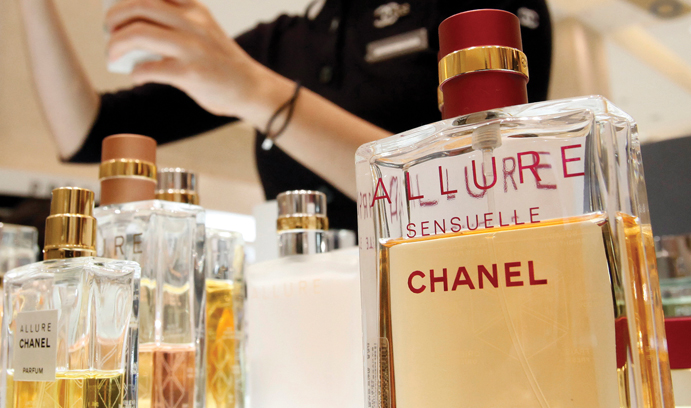Store-Within-a-Store

Photo: Jo Yong Hak/Reuters
When Shilla, a chain of duty-free stores in South Korea, wooed the luxury brand designer Louis Vuitton to open a store-within-a-store at its location in Incheon International Airport in 2010, it set off a brouhaha that ended with designers Gucci and Chanel breaking ties with Shilla and going with a competitor.
Shilla might have avoided the breakup if it had better communication with its brand manufacturers, according to Professor David A. Griffith, Iacocca chair and chairman of the Department of Marketing.
For more than a decade, Griffith has been researching how retailers that host brands through the store-within-a-store model can better keep those brands. Under store-within-a-store, a retailer such as Macy’s or JCPenney rents space to brands like Sunglass Hut or LensCrafters to set up shop within their department stores. In return, the retailer usually gets a percentage of each brand’s sales from that store. The model has been huge in Asian countries and is growing in the United States.
Such arrangements are increasingly important to retailers as stores compete for consumer dollars with online behemoth Amazon and other cyber businesses.
“It is becoming a more popular format here as retailers are looking at greater ways to reduce the cost structure,” Griffith said. “The brand manufacturers like it because the employees that they place in that setting are advocates for that product.”
But problems arise when employees of different brands at a store start talking to each other about their arrangements with the retailer, Griffith said.
One cosmetics brand representative might learn that another brand is paying a lower percentage of their sales to the retailer.
“Every business is going to structure slightly different agreements with the different brand manufacturers,” Griffith said. “I may not be happy about how the retailer is treating me based on what I’m hearing about how they’re treating you.”
But Griffith’s research found that often the problem was that the brand manufacturers compared themselves to other tenants that had higher sales than they had and the retailer did a poor job of communicating that to them.
A 2014 study Griffith did with Hannah Lee, assistant professor of marketing at Miami University in Ohio, looked at a large chain store in South Korea and found that of the brand manufacturers within the retailer, 55.3 percent thought they were being treated unfairly. But that was largely because they were comparing themselves to another brand that was performing better than they were.
“So I think I’m as good as this brand, but I’m really not,” Griffith said. “Only 18 percent of the brand manufacturers compared themselves to the right referent as perceived by the retailers.”
So how can retailers avoid thosemisconceptions?
In a second study Griffith and Lee completed this year of a chain store in Japan, they found that brand manufacturers would be more likely to stay with a retailer if the retailer showed them who they should be comparing themselves to and communicated sooner how they were performing.
“Be proactive,” Griffith said. “We all know giving bad news earlier is better than giving bad news later, but there’s the internal human tendency to avoid conflict.
“Our research shows it’s better for business if you do it earlier,” he said. “I’m going to try to work with you so you think I’m treating you fairly.”
Griffith can’t name the stores that were studied because of nondisclosure agreements. He said he’s done much of his research in Asia because getting corporate approval for such studies is more difficult with American companies.
In June, Griffith presented the research findings at a conference at the University of Hong Kong, and he has spoken to executives about ways to keep brands within their stores.
“The executives we’re working with did see value in how the research provides an actionable strategy for them,” Griffith said. “The research clearly shows they could minimize perceptions of unfairness and have better relationships with their brand manufacturers, and they want that. They don’t want their brand manufacturers leaving and going to other retail establishments.”
Why it Matters:
Store-within-a-store arrangements are increasingly important to department stores as they compete for customers with online merchants. Research shows better communication is key to helping retailers keep brand manufacturers as tenants.
Story by Margie Peterson
Posted on:




